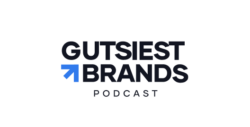For several decades brand tracking has been an important
tool for brand and insight managers to measure the strength of their brands and
stay ahead of threats and opportunities. But due to their predominant focus
measuring knowledge and equity, brand trackers have not kept up with the
changing way we now interact with brands and how that impacts our feelings
towards brands as a result.
Social media and other digital-based interaction mean the
brands most likely to thrive are those with whom consumers have the fullest
two-way conversations. Think of it as a relationship with a friend or family
member. When you really care about someone, you can share positive feedback as
well as constructive criticism, because you want them to improve. You are
invested in their success.
Traditional brand trackers
Having a strong brand is important for market share and
overall company value. But brands that don’t remain relevant, innovate, or add
value to consumers lives could easily disappear without anyone caring.
Traditional brand models are based on measuring past or
current success, rather than momentum moving forward.
Measures like awareness, familiarity, consideration, and
usage assume a linear framework which worked perfectly in an age where messages
were pushed through mass media and communication was one way, brands set the
agenda, and the target audience had little opportunity to influence the brand
relationship.
They are no longer enough to measure brands’ successfully in
today’s environment. This requires a new
model for brand tracking – one that considers the whole relationship between
the consumer and the brand. That’s why we developed hi brands. Our model considers
the complexities of the way brands engage in consumers lives and how rational
and emotional consumer experiences deepen brand knowledge and influence
preference and purchase. In other words, the model is future looking; measuring
the future relevance and vitality of the brand.
Relevance and Vitality
The successful brands have consumers who are excited about
the brand and its products and services. This means they seek out information
about the brand and encourage brands to stay in contact. And where they are
worried about missing out on the latest products and services or want to be one
of the first to try or own a new product or take advantage of services and
offers, for instance new phones and games. Consumers care more about brands if
they feel there is a reciprocal relationship of listening and being empathetic to
their needs, and making improvements that are relevant to those needs, in way
that is more co-creational than in the past.
Creating brand excitement: giffgaff
A great example of how a new brand entered the market and
quickly built brand vitality and future relevance by having a strong two-way
conversation with consumers is that of the mobile virtual network operator
(MVNO) giff gaff, owned by Telefonica and using the O2 network. It calls its
customers “members”.
The MVNO has a community-powered model offering good rates
and rewards for members for promoting the business and answering support
queries – also enabling it to keep operating costs as low as possible due to
minimal staff.
With around 3 million members at the heart of everything it
does, a key goal is to adapt its business to remain relevant to its members. It
invites members into its office and they guess star in adverts and they create
video and blog content for other members to enjoy. Members have had over 600 of
their ideas implemented… and we see all this coming through strongly in its hi brand
ratings.
Brand goals
To be a compelling brand that achieves strong market share
and mass market success, a brand still needs to score well on equity and
knowledge – as measured by traditional brand trackers. But in order to thrive
in the future, they will also to secure their relevance and vitality.
And this means brand tracking must adapt to fit today’s world and deliver ROI.
And in keeping with the underlying cause of this revolution in brand tracking, we use online platforms and templated/automated solutions to enable even faster and more cost- efficient insights, including self-serve for those who want to engage with us this way.



 Back to Blog
Back to Blog

